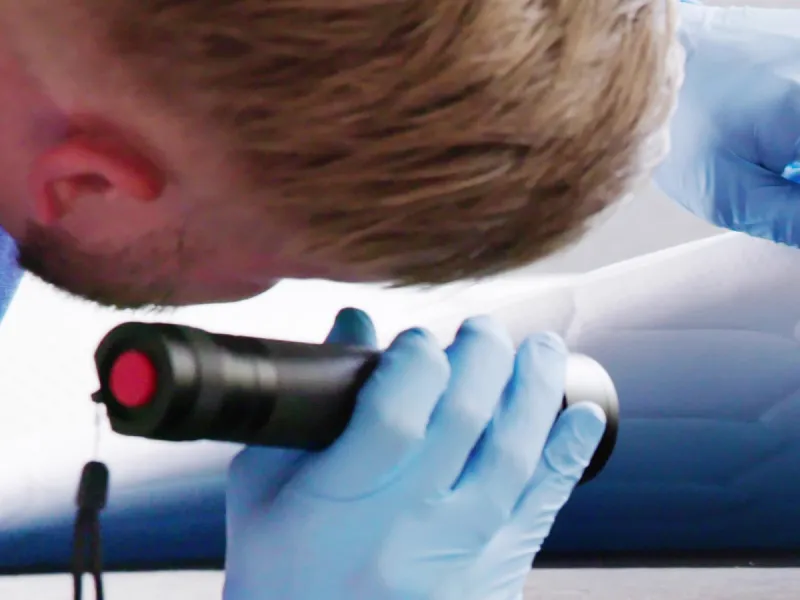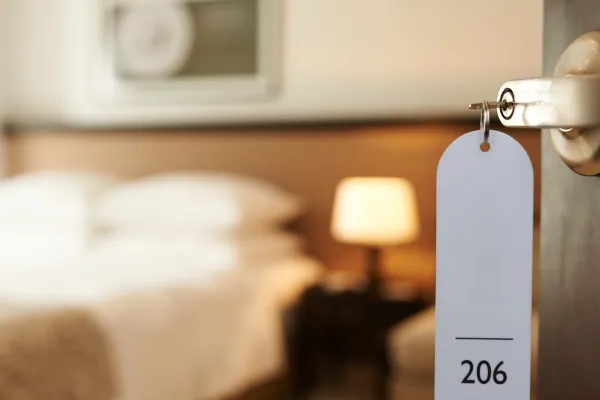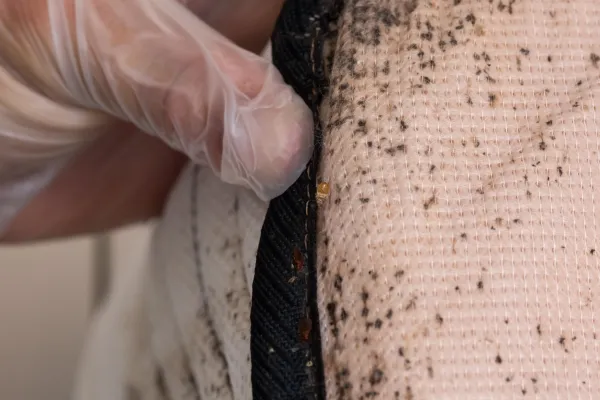5 Signs You May Have a Bed Bug Infestation

Are you concerned about the possibility of bed bugs living in your home? You're certainly not alone. These flat, round insects are common in a wide variety of environments including rooming houses, apartment buildings, shelters, hotels, cruise ships, buses, trains, dorms, and more. In fact, according to Onedesk, roughly 80% of hotels and motels in the United States reported the presence of bed bugs in 2022 alone. They're everywhere! What's worse is they can be incredibly difficult to live with. These pests can cause all sorts of problems, including the following:
- Itching and loss of sleep
- Bite marks
- Allergic reactions such as swelling
- Anxiety
- Secondary infections like impetigo
- Excrement and eggs in bedding
Fortunately, these bugs are not known to spread disease. That said, they're not at all something you want to keep around. If you think you have bed bugs, don't ignore the signs! Here are five indicators that signal you may have bedbugs in your home and need pest control help.
1. Itchy Red Spots in the Morning
Did something get to you in the night? It's common to wake up with imprints on your skin depending on your bedding, but if you notice spots that itch, don't ignore them. Marks on your skin when you wake up could be an indicator of an unwelcome guest in the sheets. It should be especially alarming if these bug bite marks appear in the formation of a line. This usually indicates that a bug was crawling on you in a linear fashion, meaning you can cross off mosquitoes from your list of potential culprits.
That said, not all bed bug bites itch. For better or worse, some people don't react to the bites at all and won't experience itching or even inflammation in the slightest. As such, it's important to check for bed bugs regularly. While these itchy marks are indeed a telltale sign of infestation, you can't always rely on the presence or absence of this symptom to know for sure. Fortunately, there are plenty of other signs to rely on.
2. Random Flecks of Blood on the Sheets
This one can be particularly alarming. If you've noticed spots of blood and haven't been able to account for where it came from, it could be a matter of a crushed bug or two. You may not notice it as it happens, but if you have a bed bug infestation, you're likely squashing ones that have just fed. Bed bugs full of blood that get squished in your sleep will, understandably, release that blood onto your various fabrics. If you've noticed red spots on your pajamas, sheets, or pillowcase and doubted that it was yours, you can rest assured that it probably was yours, just borrowed.
Of course, with the way blood browns over time, it's also worth keeping an eye out for stains that aren't just bright red. Relatedly, you may find small black stains as well. Bed bugs also leave behind fecal stains in the same places you might find blood.
3. You've Been Near Someone With Bed Bugs
Unfortunately, bed bugs are contagious in a sense. If your friends visit with bed bugs, or you visit a neighbor who has bedbugs, or even if you ride on a train that someone with bed bugs has been on, you run the risk of taking them home. These bugs are common since they are small, and they're not easy to spot when you're not looking for them. The fact that they prefer fabrics, which are often not a flat color nor a flat surface, makes them even harder to see as you move about the world. Generally speaking, it's best to avoid individuals or locations that you suspect may have bed bugs.
The same goes for furniture used by another person. The risk of bed bug infestation is always present when you bring used and discarded furniture into your home. You might want to reconsider taking that cheap sofa for the lower price if it might bring an expensive bed bug problem along with it.
On another note, if you're suffering from a bed bug infestation, avoid traveling and visiting until the problem is resolved! Don't bring the bed bugs along to propagate in a new place. It won't help your problem and you'll be inflicting it upon someone else as well.
4. White Spots in the Corners of Your Furniture
Check the dimples in your mattress and the corners of your couch cushions. These are the sorts of safe, little places that bed bugs love to lay their eggs in. You may need to use a light and magnifying glass to inspect these areas properly. It's possible to see them with the naked eye, but their color and size make them tough to see even if you know what you're looking for. In fact, if you're not aware of the presence of bed bugs, you may even mistake them for food crumbs.
It's worth noting that, because of the wandering habits of pregnant bed bugs, these eggs may be found away from other spots you've identified as infected. This is great for the survivability of their species, but for us, it's a bit of a problem.
If you spot bed bug eggs anywhere in your home, be sure to take care of them right away! These eggs hatch within seven to 10 days, and it's impossible to tell how long they've been sitting there without putting them under a microscope. Treat bed bug eggs with as much caution as you would beg bugs themselves, and call in a professional as soon as possible.
5. Shed Skins and Husks
Once those eggs hatch, of course, they aren't fully grown. Juvenile bed bugs that hatch in your home will almost certainly, at some point, need to shed their exoskeleton as part of the natural molting cycle. These shell casings are generally discarded onto mattress seams or wedged into holes in our wooden furniture. That said, you can find them just about anywhere. This is a process that each bed bug goes through several times, so if your infestation is severe enough, you might come across these casings without searching. They'll also come in a variety of sizes as the molting happens periodically as the bugs approach adulthood.
Fortunately, unlike their eggs, these shells are difficult to mistake for anything else. If you come across the shed skin of a bed bug, you'll almost certainly recognize it as a bug shell. Identifying the shape may be more challenging to the untrained eye, but it should be more than enough of an indicator that a pest control company should come to take a look. If you come across any yellowish, translucent shells in your home, don't ignore them. Reach out for pest control assistance as soon as possible!
When it comes to spotting signs of bedbugs, there are a lot of little things to look out for. It's also worth remembering that bed bug habitats are much more diverse than simply just beds. Be sure to check absolutely everywhere, including your box springs, nightstands, dressers, cardboard boxes, and wallpaper. To do so, you'll likely need to hire professional pest control services to search the entire home. Anywhere you can imagine a bed bug going is highly likely to be fair game. Don't hesitate to reach out to us as soon as you notice the signs of infestation. Give us a call at Mares Exterminating to learn more about our pest control services today!



